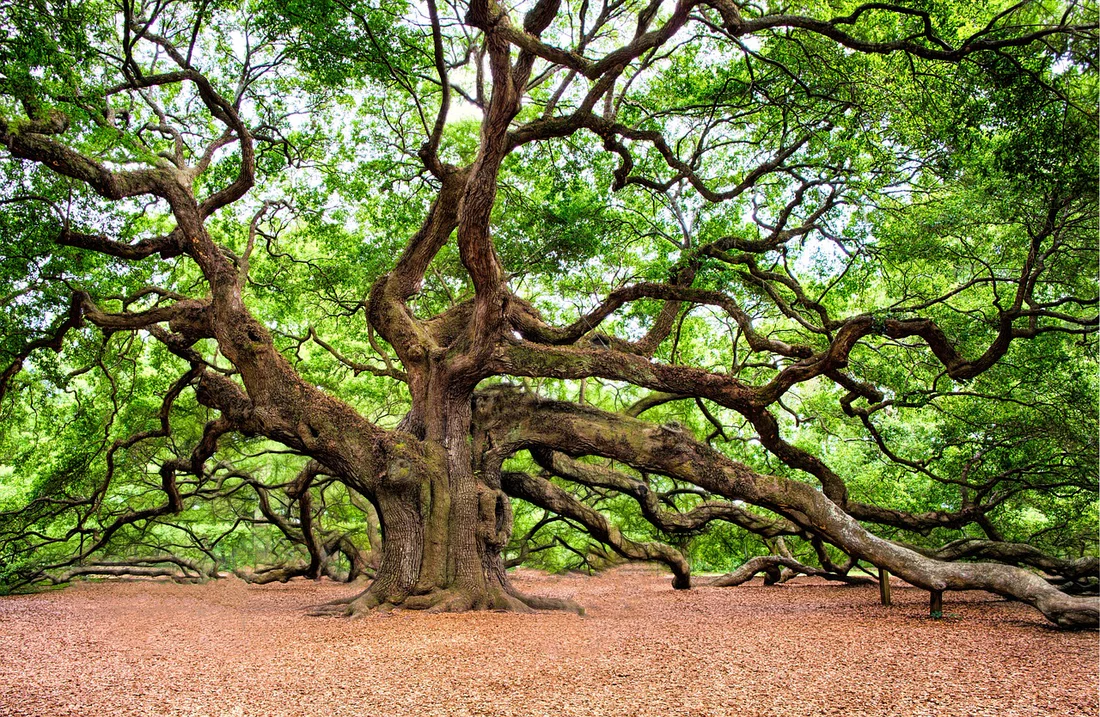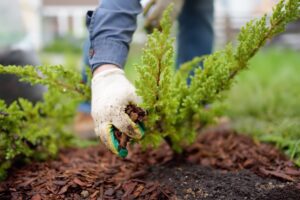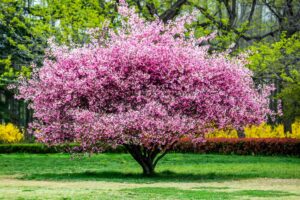How to Choose the Best Oak Trees: A Complete Guide
Are you considering adding the majesty and beauty of oak trees to your landscape? Oak trees are among America’s most beloved and iconic tree species, offering shade, wildlife habitat, and incredible aesthetic value to any property. With over 90 oak species native to the United States alone, selecting the right oak for your specific needs can seem overwhelming. This comprehensive guide will walk you through everything you need to know about choosing the perfect oak tree for your yard or property.
Understanding Oak Tree Varieties
Oak trees belong to the genus Quercus and are broadly categorized into two main groups: white oaks and red oaks. Each group has distinct characteristics that influence their suitability for different landscapes and purposes.
White Oaks vs. Red Oaks
White oaks typically have rounded leaf lobes and produce acorns that mature in a single season. They generally have smoother bark and tend to be more resistant to diseases. According to the USDA Forest Service, white oaks also tend to have more decay-resistant wood (USDA Forest Service).
Red oaks, on the other hand, feature pointed leaf lobes with bristle tips and produce acorns that take two years to mature. They typically grow faster than white oaks but may be more susceptible to certain diseases like oak wilt.

Popular Oak Species for American Landscapes
When selecting an oak tree, it’s important to understand the characteristics of popular species to determine which will best suit your needs:
| Species | Growth Rate | Mature Height | Drought Tolerance | Cold Hardiness | Special Features |
|---|---|---|---|---|---|
| White Oak (Q. alba) | Slow | 50-100 ft | High | Zones 3-9 | Long-lived (500+ years), excellent fall color |
| Red Oak (Q. rubra) | Moderate-Fast | 60-75 ft | Moderate | Zones 4-8 | Fast growth, brilliant fall foliage |
| Live Oak (Q. virginiana) | Moderate | 40-80 ft | Very High | Zones 7-10 | Evergreen, salt-tolerant, hurricane-resistant |
| Pin Oak (Q. palustris) | Fast | 60-70 ft | Low | Zones 4-8 | Distinctive pyramidal shape, wet soil tolerance |
| Bur Oak (Q. macrocarpa) | Slow-Moderate | 70-80 ft | Very High | Zones 3-8 | Extremely adaptable, pollution-resistant |
| Willow Oak (Q. phellos) | Moderate | 60-75 ft | Moderate | Zones 5-9 | Fine texture, willow-like leaves |
| Scarlet Oak (Q. coccinea) | Moderate | 60-80 ft | High | Zones 4-9 | Outstanding scarlet fall color |
| Swamp White Oak (Q. bicolor) | Moderate | 50-60 ft | Moderate | Zones 4-8 | Tolerates wet soils and urban conditions |
Factors to Consider When Choosing an Oak Tree
Climate Compatibility
Before selecting any oak species, you must ensure it’s well-suited to your local climate. The USDA Plant Hardiness Zone Map (available at USDA Plant Hardiness Zone Map) is an essential resource to determine which oak species will thrive in your region.
Some oaks, like the bur oak, demonstrate remarkable adaptability across multiple climate zones, while others have more specific requirements. Southern live oaks thrive in the warm coastal regions of the Southeast, while northern red oaks prefer the cooler climates of the Northeast and Midwest.
Space Requirements
One of the most common mistakes when planting oak trees is underestimating their mature size. Most oak species grow quite large, both in height and spread. You’ll need to consider:
- Mature height: Will the tree interfere with power lines or structures?
- Canopy spread: Is there enough horizontal space for the tree to expand?
- Root zone: Many oaks develop extensive root systems that can damage foundations, sidewalks, or underground utilities if planted too closely.
As a general rule, plant large oak species at least 20-30 feet away from structures and utility lines. Medium-sized varieties should be placed 15-20 feet from structures.
Soil Conditions
While oaks as a group are adaptable, different species have specific soil preferences:
- For clay soils: Bur oak, swamp white oak, and pin oak typically perform well
- For sandy soils: Black oak, scarlet oak, and post oak are good choices
- For wet soils: Swamp white oak, pin oak, and overcup oak thrive in periodically wet conditions
- For dry sites: Bur oak, chinkapin oak, and scarlet oak demonstrate good drought tolerance
Before planting, it’s advisable to conduct a soil test through your local extension office to determine your soil’s pH and nutrient levels. Most oaks prefer slightly acidic to neutral soil (pH 5.5-7.0).
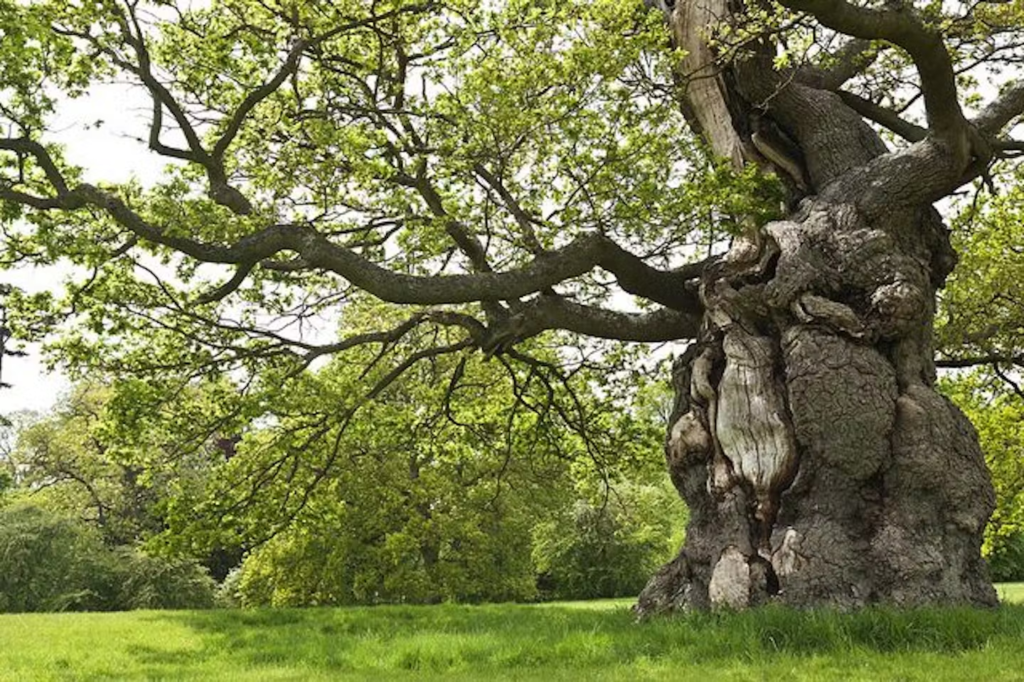
Growth Rate and Lifespan
If you’re looking for quicker results, consider faster-growing species like the pin oak, northern red oak, or willow oak. These can grow 15-25 feet in a decade under optimal conditions. However, remember that faster-growing trees often have weaker wood and shorter lifespans.
For a truly long-term investment, white oaks, bur oaks, and live oaks grow more slowly but can live for centuries. Some white oaks in the United States are over 600 years old!
Oak Tree Benefits and Uses
Environmental Benefits
Oaks provide numerous environmental benefits that make them valuable additions to any landscape:
- Carbon sequestration: Mature oaks can absorb significant amounts of carbon dioxide from the atmosphere
- Wildlife habitat: Oaks support more wildlife species than almost any other tree genus in North America
- Biodiversity: A single oak tree can support hundreds of species of insects, birds, and mammals
- Watershed protection: Oak roots help prevent soil erosion and manage stormwater runoff
The National Wildlife Federation notes that oak trees support over 500 species of caterpillars alone, which form an essential food source for birds and other wildlife (National Wildlife Federation).
Landscape Uses
Beyond their environmental benefits, oaks serve numerous practical and aesthetic functions in landscapes:
- Shade trees: Most oak species provide excellent shade with their broad canopies
- Street trees: Certain varieties like pin oak and scarlet oak work well as urban street trees
- Specimen trees: Oaks make stunning focal points in landscape designs
- Screening: Evergreen species like live oak provide year-round privacy
- Fall color: Many deciduous oaks offer spectacular autumn displays
Wood and Acorn Production
If you’re interested in the productive aspects of oak trees, consider that:
- Oak wood is highly valued for furniture, flooring, and barrel-making
- Acorns provide food for wildlife and can be processed for human consumption (though this requires proper leaching techniques)
- Some oak species produce more abundant or more palatable acorns than others
Selecting Healthy Oak Trees for Planting
Nursery Selection Tips
When purchasing oak trees from a nursery, look for these indicators of health:
- Straight, unblemished trunk with no wounds or cankers
- Even branching structure without tight V-shaped crotches
- Healthy leaves without spots, discoloration, or insect damage
- Root system that isn’t circling inside the container (for potted trees)
- Balanced root-to-shoot ratio
The U.S. Department of Agriculture recommends selecting younger, smaller trees over larger specimens, as they typically establish more quickly and suffer less transplant shock (USDA Urban Tree Planting Guide).
Container vs. Bare Root vs. Balled-and-Burlapped
Oak trees are available in several forms:
- Container-grown: Easiest to plant and establish, but often more expensive
- Bare-root: Available only during dormant season, typically the least expensive option
- Balled-and-burlapped: Large specimens with soil balls wrapped in burlap, good for immediate impact but require careful handling
For most homeowners, container-grown trees in 5-15 gallon pots offer the best balance of value, ease of planting, and establishment success.
Planting and Early Care
Planting Techniques
Proper planting is crucial for oak tree success:
- Dig a hole 2-3 times wider than the root ball but only as deep as the root ball itself
- Loosen the soil around the planting hole to encourage root expansion
- Place the tree at the same depth it was growing in the nursery (look for the soil line on the trunk)
- Backfill with native soil, avoiding amendments in most cases
- Water thoroughly after planting
- Apply 2-3 inches of mulch in a circle around the tree, keeping it away from the trunk
Watering and Fertilization
During the establishment period (typically 1-3 years):
- Water deeply but infrequently to encourage deep root growth
- Provide supplemental water during dry periods, especially in the first year
- Avoid fertilization in the first year unless soil tests indicate severe deficiencies
- After establishment, most oak trees require minimal supplemental water except during severe drought
Common Oak Tree Challenges and Solutions
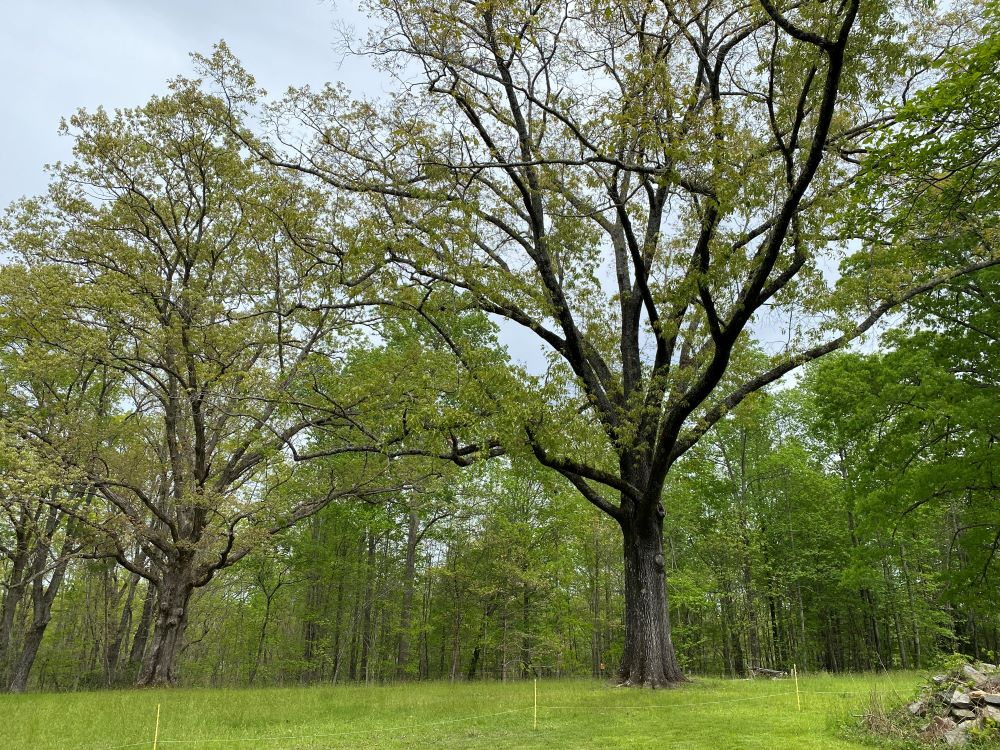
Disease and Pest Management
While oaks are generally hardy, they can face several challenges:
- Oak wilt: A serious fungal disease affecting primarily red oaks; prevention is key as treatment options are limited
- Anthracnose: A fungal disease causing leaf spots and defoliation in wet springs
- Gypsy moths and oak processionary moths: Caterpillars that can defoliate trees
- Sudden oak death: A serious disease affecting oaks in California and Oregon
The best defense against these problems is selecting disease-resistant species appropriate for your region and maintaining tree health through proper care. The USDA Forest Service provides updated information on oak pests and diseases at USDA Forest Health Protection.
Drought and Climate Considerations
As climate change affects growing conditions across the United States, drought tolerance is becoming increasingly important when selecting oak species. The U.S. Environmental Protection Agency recommends choosing trees that can withstand both current and projected future climate conditions in your region (EPA Climate-Ready Trees).
Species like bur oak, chinkapin oak, and live oak demonstrate exceptional drought tolerance once established.
Conclusion
Choosing the right oak tree for your landscape requires careful consideration of species characteristics, site conditions, and your specific goals. By selecting appropriate species, purchasing healthy specimens, and providing proper care during establishment, you’ll be rewarded with magnificent trees that can enhance your property for generations to come.
Remember that planting an oak is an investment in the future—while you’ll enjoy some benefits within a decade, the true majesty of these trees often takes 30-50 years to develop. However, few landscape choices offer the same combination of beauty, environmental benefits, and lasting legacy as planting the right oak trees on your property.
For more specific advice tailored to your region, contact your local extension office or state forestry department. They can provide recommendations on species selection and care based on local conditions and challenges.
